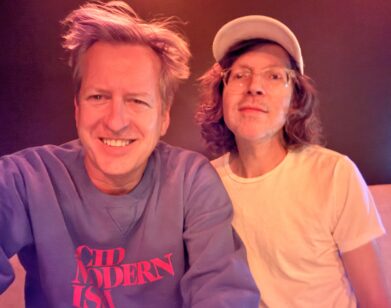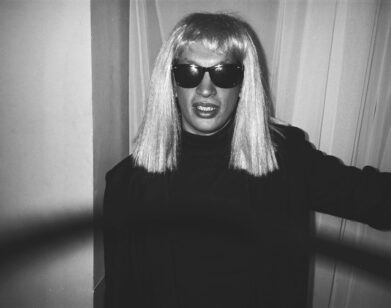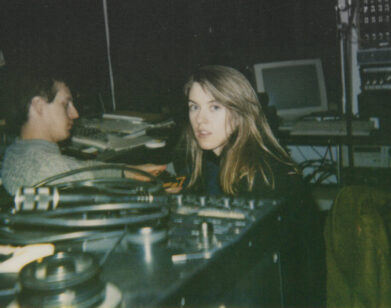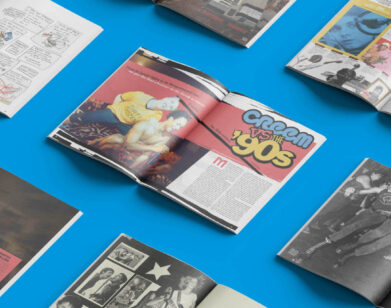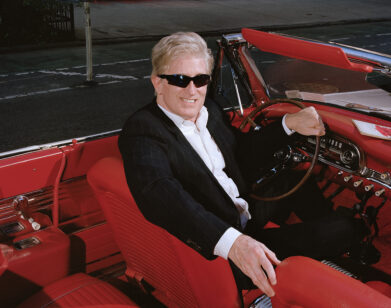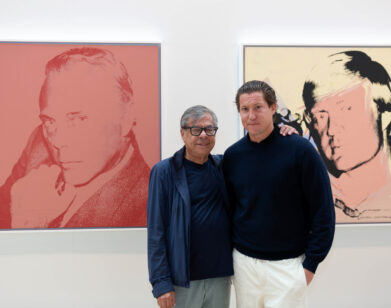Photographer Ethan Russell Has the Best Seat in the House
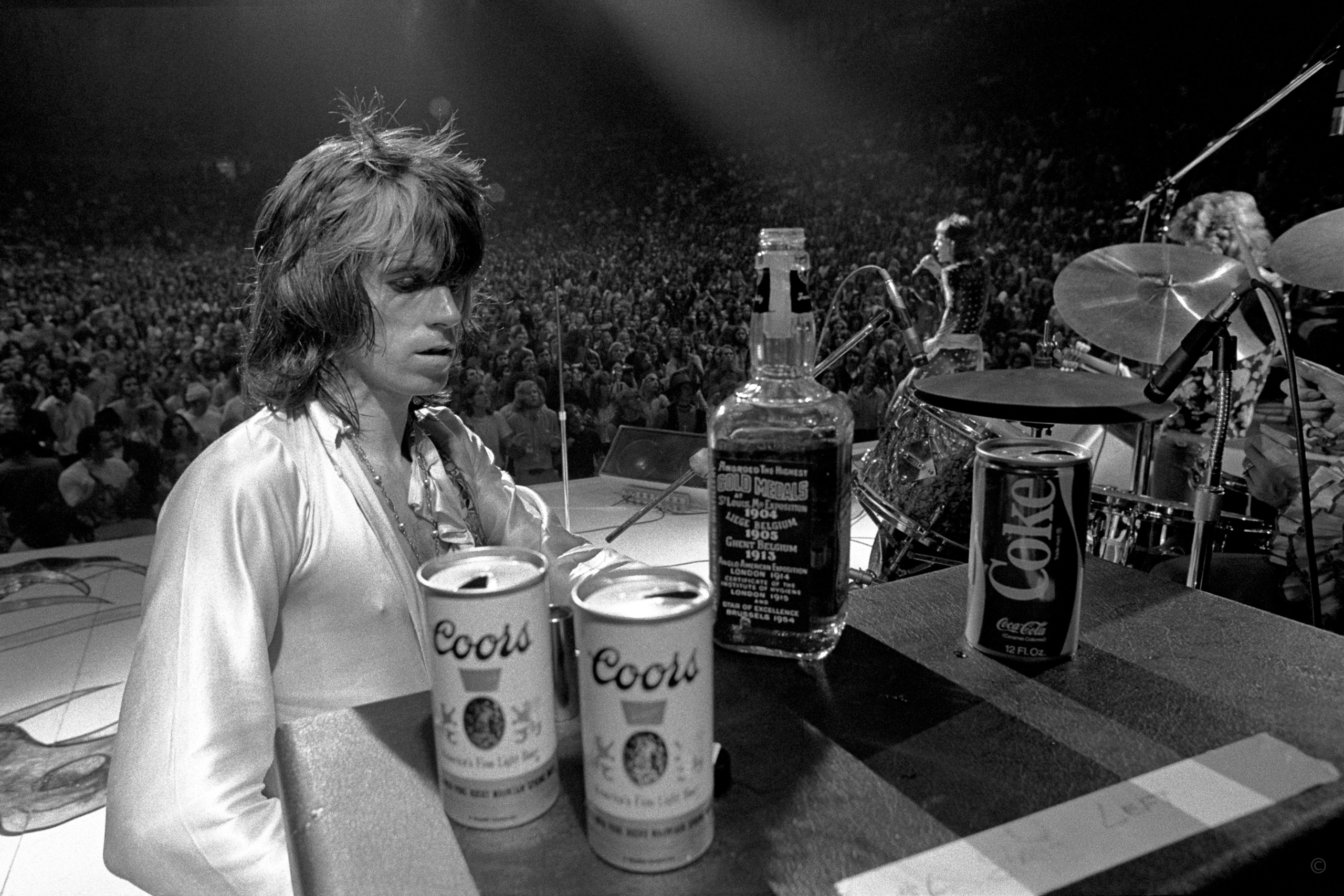
Keith Richards with Jack and Coors 1972, from Ethan Russell Photography: Best Seat in The House. All photos courtesy Ethan Russell.
Ethan Russell never imagined himself as a photographer, let alone did he imagine shooting the album covers for history’s greatest rock ‘n’ roll musicians. All the 20th century’s defining “The” bands—from The Beatles to The Rolling Stones to The Doors—can be found in Russell’s legendary canon, which he displays in his new photography book Ethan Russell Photography: Best Seat in the House. Whether tagging along onstage during the Rolling Stones’ ‘69 tour or inside the Abbey Road studio during the recording of Let It Be, Russell possesses the unique talent to bring out the humanity in the world’s rock gods. Russell’s entry into the world of photography began with a twist of fate, when he accompanied his friend to an interview with Mick Jagger. With the release of his book, Interview caught up with Russell to dive into the backstory behind the scenes with John, Yoko, Keith Richards, and more.
———
Yoko Ono at Abbey Road canteen, 1968
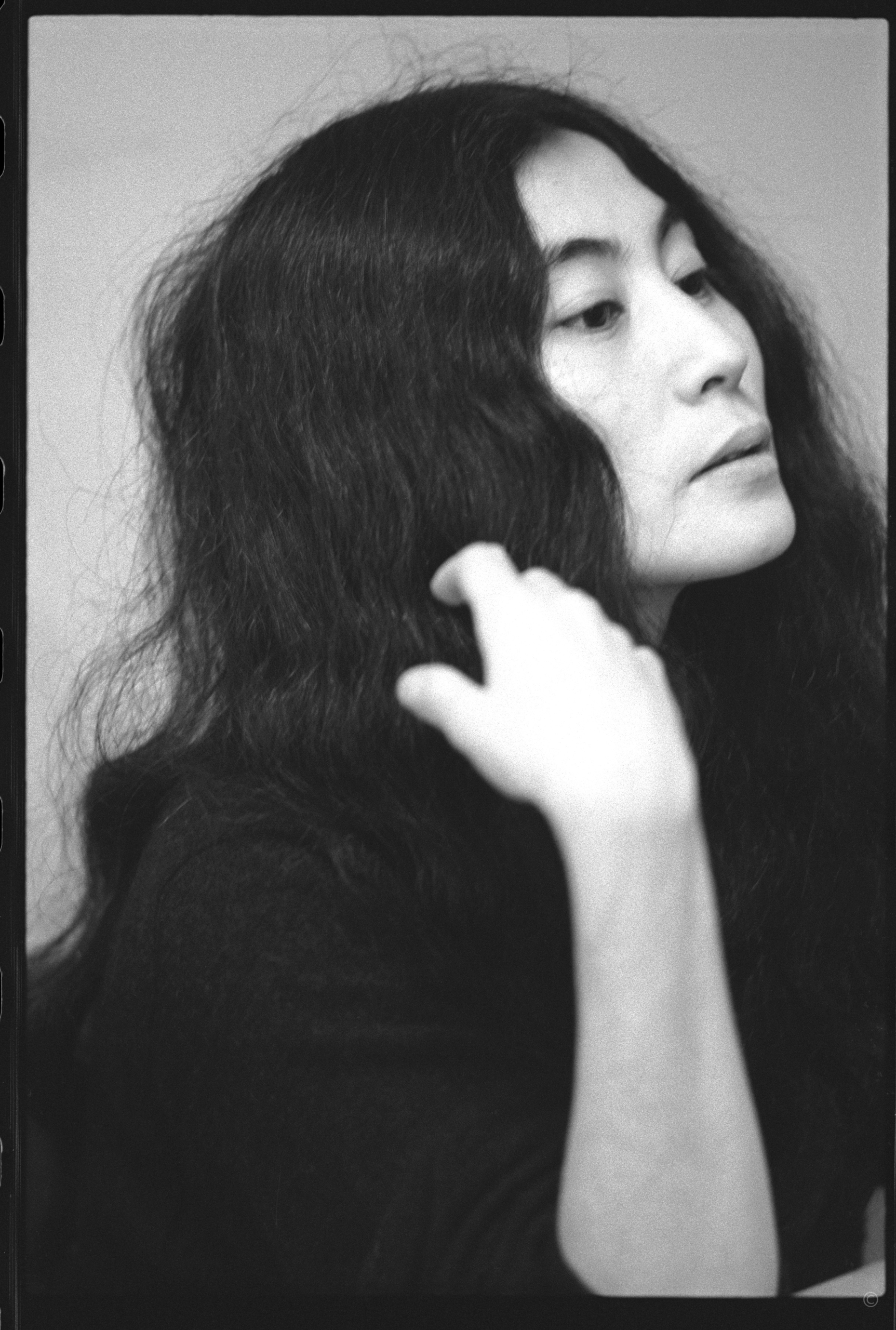
“That was from what’s otherwise known to me as the first session with John Lennon. I did the pictures that were expected and then John, who was just infinitely more friendly than I could imagine, asked us to go to Abbey Road, which was also known as EMI. And at that point Yoko was already there. They met a few months before that at an art opening that Yoko was having arranged by a guy called Robert Fraser.
I love that shot because I think if nothing else, it sort of shows you how John could fall in love with her. Because she was a real beauty if you could see it. Most people couldn’t see it. There was some misogyny and racism and Beatles fear. Maybe within the last year and a half I did a gallery event about the two of them falling in love and I can go on and on forever. They could have gone off and lived wherever they wanted. John was very open as a human being, funnily enough, and I think that if he took a shining to you, he invited you in. And so he did. Years later, I said, ‘I think John liked me because I took good pictures of his girlfriend.'”
———
Jim Morrison at cocktail reception, London, 1968
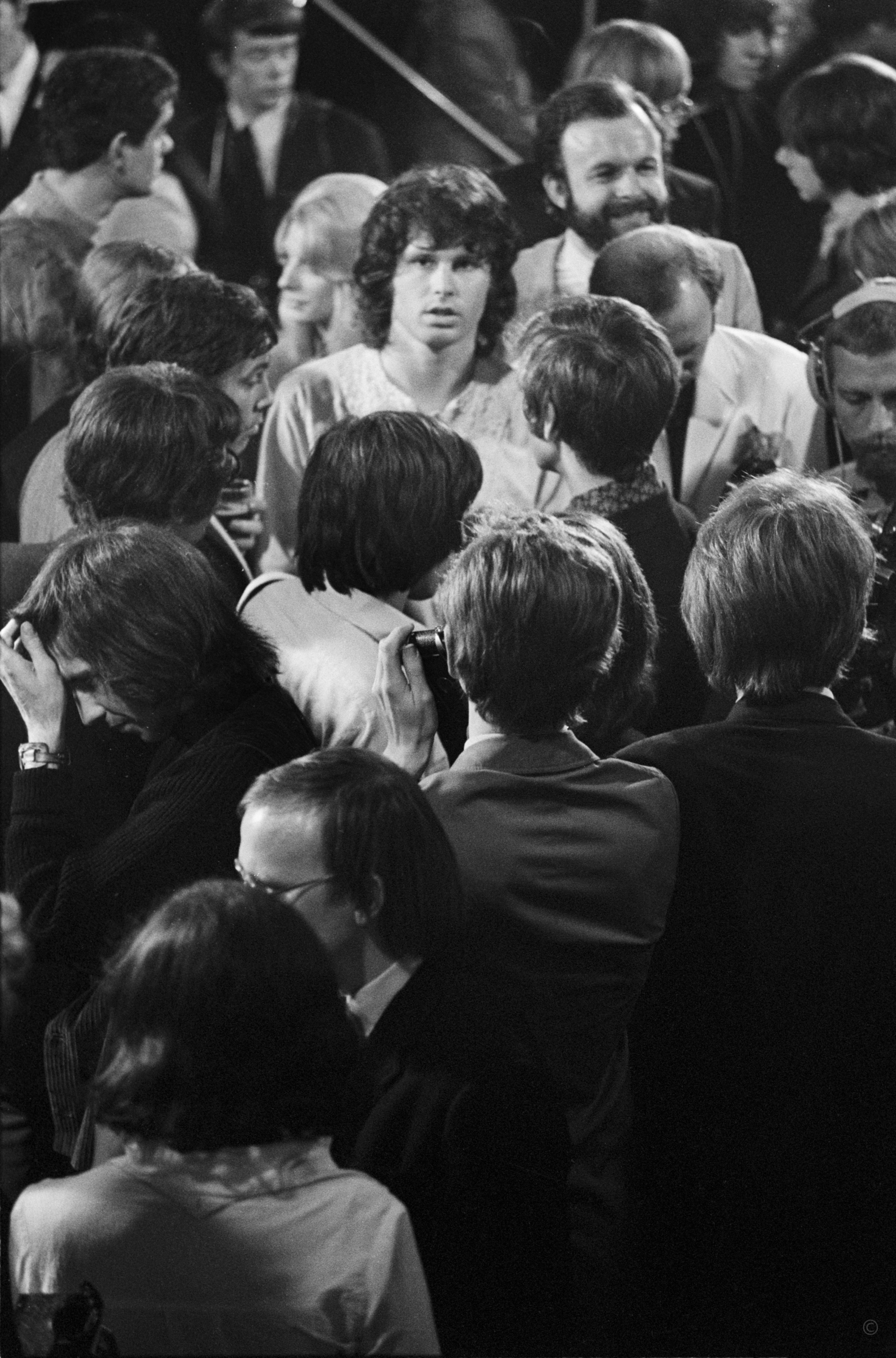
“Morrison showed up. I’m in a reception. I’d taken a picture and then I was the photographer for the people that did the television show because that’s what the event was. He was coming to London to do a television film with Granada Television and they were doing some interesting things. They had done the movie of Johnny Cash at Folsom prison. They had a certain cachet and I just showed up. I found him to be boring frankly, as did the British. Maybe he was having a horrible day, and maybe he just was jet lagged. Who the fuck knows? But he was not pleasant and he projected a very sort of self-involved air. He got all the attention, the other Doors got no attention whatsoever. It was all focused on him. He was very low energy and kind of tense the whole time.
The British that were in that room booed him. He got in a fight. He decided in the middle of the filming that he didn’t like the lights. He demanded that the producer turn them off. There’s this confrontation between the producer and him because he doesn’t want to have the lights on him even though he’s there to do a film. And ultimately the producer turned the lights off for a bit, and the British crowd booed him for that which didn’t seem entirely inappropriate.”
———
Paul McCartney on the Twickenham sound-stage for Let It Be, 1969
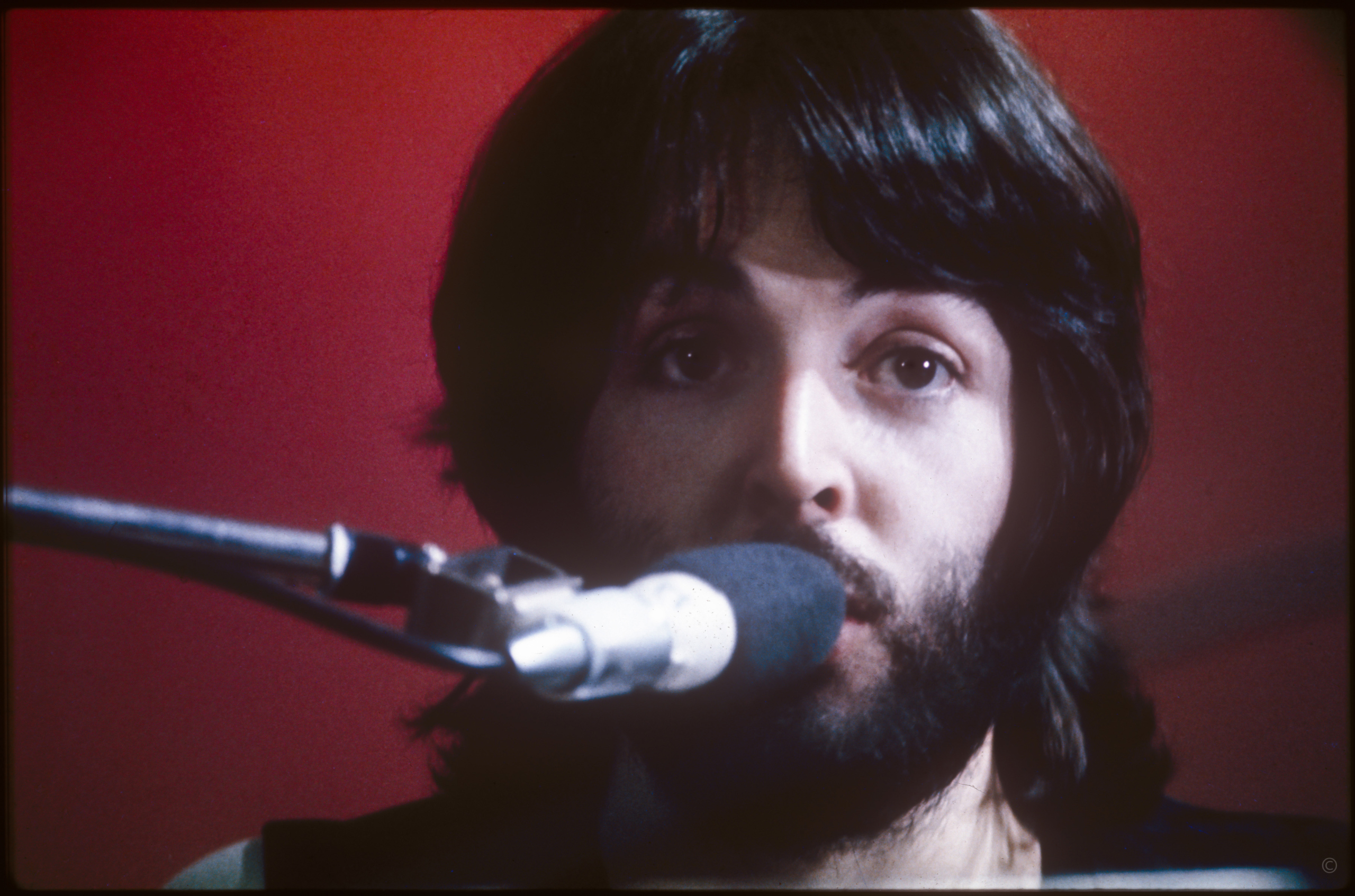
“I think that Let It Be is the only cover except for Revolver where they appear as individuals, because I didn’t tell people what to do. I worked for the Beatles for around 30 days and all of that came out of the relationship with John. I got a call from Apple Records because they’d seen the pictures of John and Yoko, the ones that we were talking about earlier. They called me in because they wanted those pictures in case they needed them, and they were curious about who this guy was.
When I was in Apple, I asked if I could go down to the filming because I knew it was going on, and I was told that was impossible. But I knew everybody, so I just went down anyway. I’m sitting in the back of this huge sound stage and I’m standing there watching them and the guy that told me I couldn’t come, I turned around and I see him and he walks up to me and he said, ‘Well, we’ve decided to let you come down.'”
———
The Beatles on the Roof of Apple Records, January 31, 1969
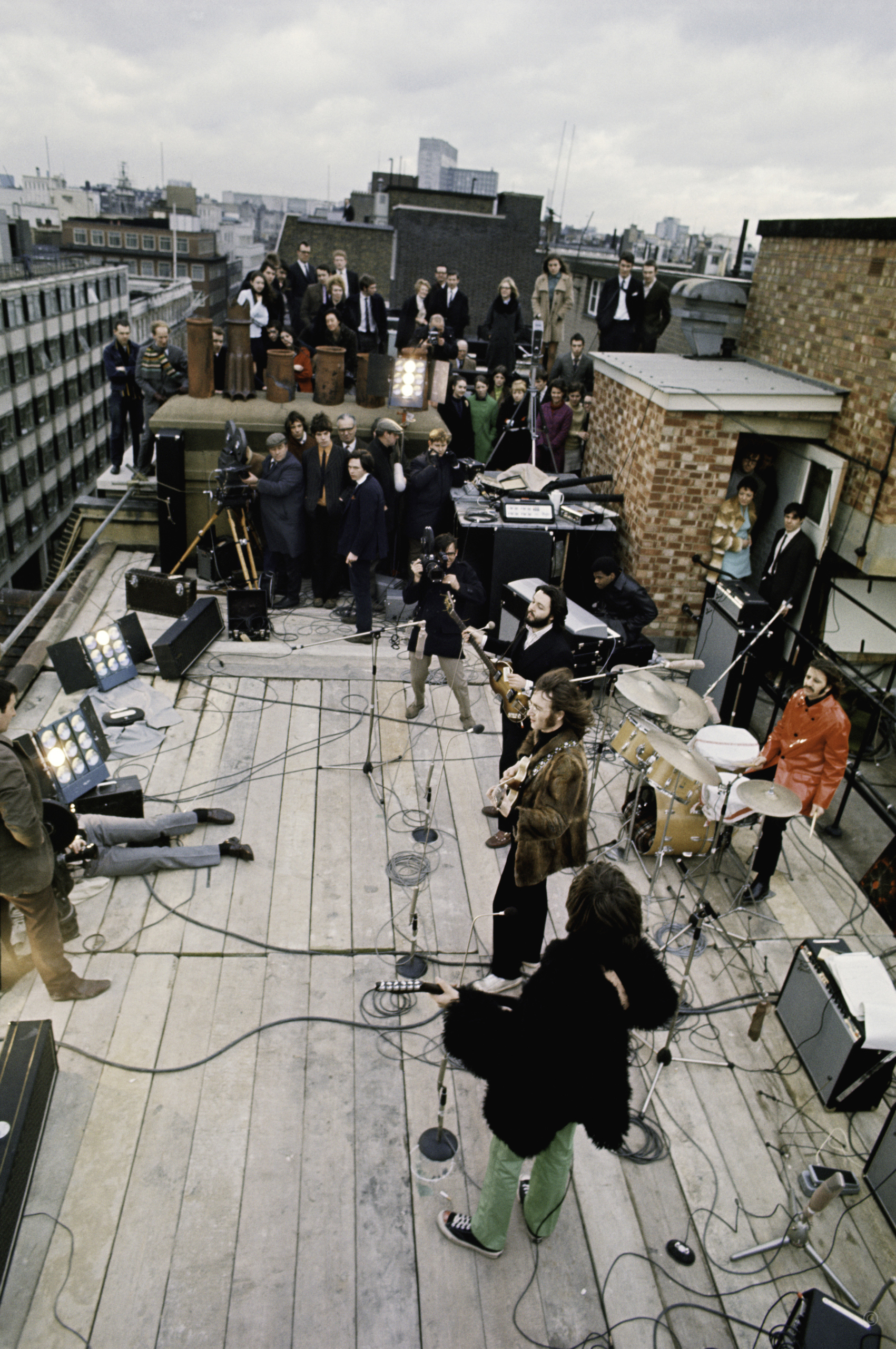
“I could’ve fallen to my death, who knows. But I look at that film after the fact and I was kind of terrified myself. But I was one of the crowd at that point. There’s a film crew there because they’re making Let It Be. People disappear, but I don’t think film crews really disappear. Too big.
It is sort of extraordinary how iconic and important that moment has been. Everyone crawled up on the roof. You couldn’t see them. If you see the film, it’s just a camera pointing up at a building and some noise. But roughly speaking, thirty days earlier, the Beatles got together on a sound stage and they had no record. And then thirty days later, went up on top of a roof and performed it all the way through, basically without a mistake. Unbelievable.”
———
Keith Richards with Jack and Coors, 1972

“It’s certainly a hero shot, right? Nothing’s set up. I really never set anything up, so it’s totally real. But from my point of view, I’d already done the entire 1969 tour. It’s so Keith, I mean, he gives you so much photographically while not intending on it. It sort of goes to what I believe, which is the more that you can take a person’s photograph that’s engaged with what they do and what they care about, the better photograph you’re going to get, because they’re not self-conscious in any way. He was clearly not paying any attention to me, and therefore I think it’s kind of wonderful.”
———
Mick Jagger on stage at Altamont, 1969
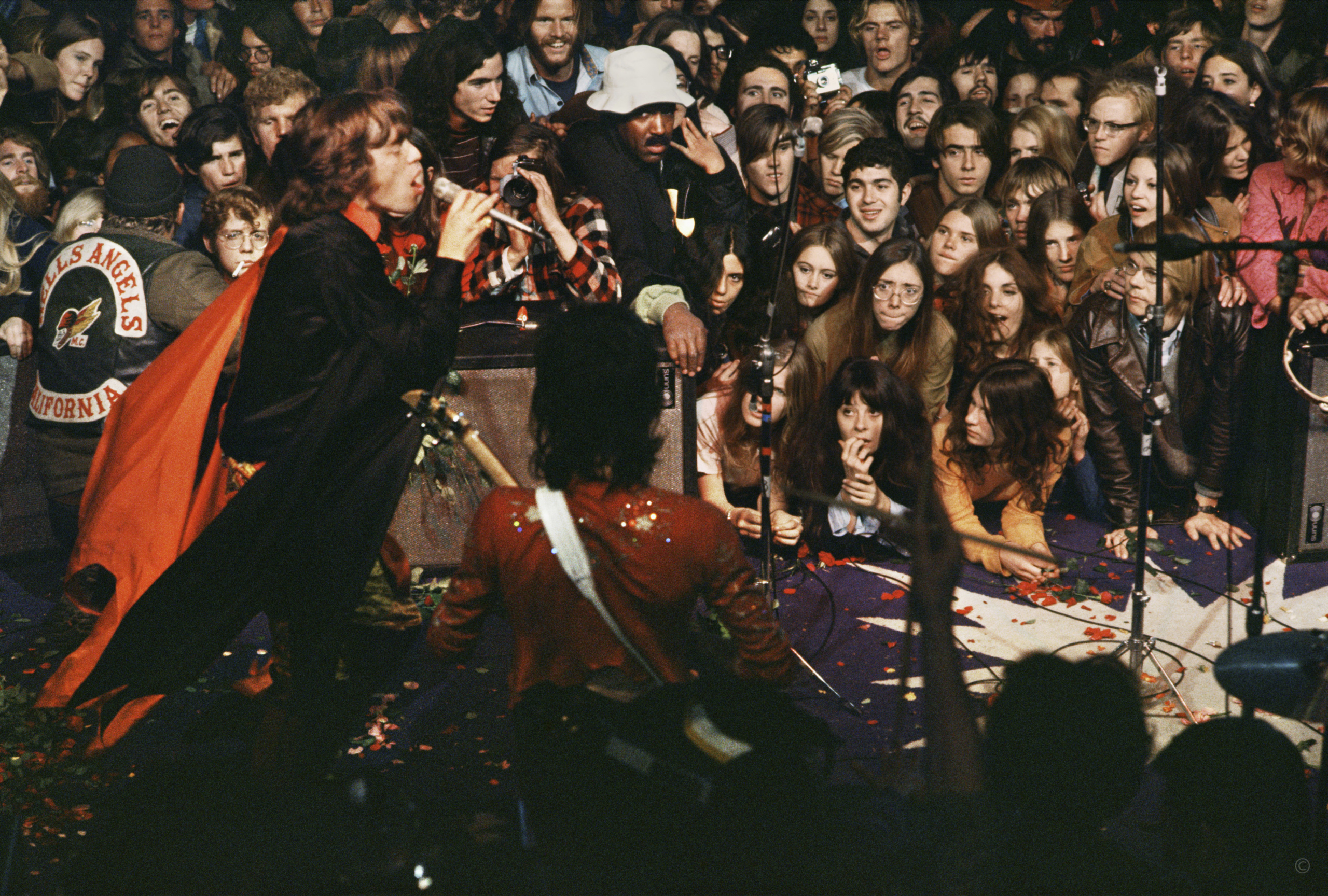
“They brought the same stage to Altamont that they had for the entire tour. When it was set up it was still only about four and a half or five feet tall, it was just a low stage. It was so out of control that when I was brought onto the stage at the same time that the Stones came on stage, there were probably 60 people on the stage. It was ridiculous. That many people on the stage caused it to sag.
If it hadn’t been for the fact that the violence at Altamont was so terrible—in terms of the Hell’s Angels beating up people in the crowd and so on—they might not have gotten blamed, because it was a little bit impossible to believe that they weren’t to blame. But strictly speaking with that one event, I think not.”
———
Mick Jagger “Pale” in The Rainbow Room, New York City, 1969
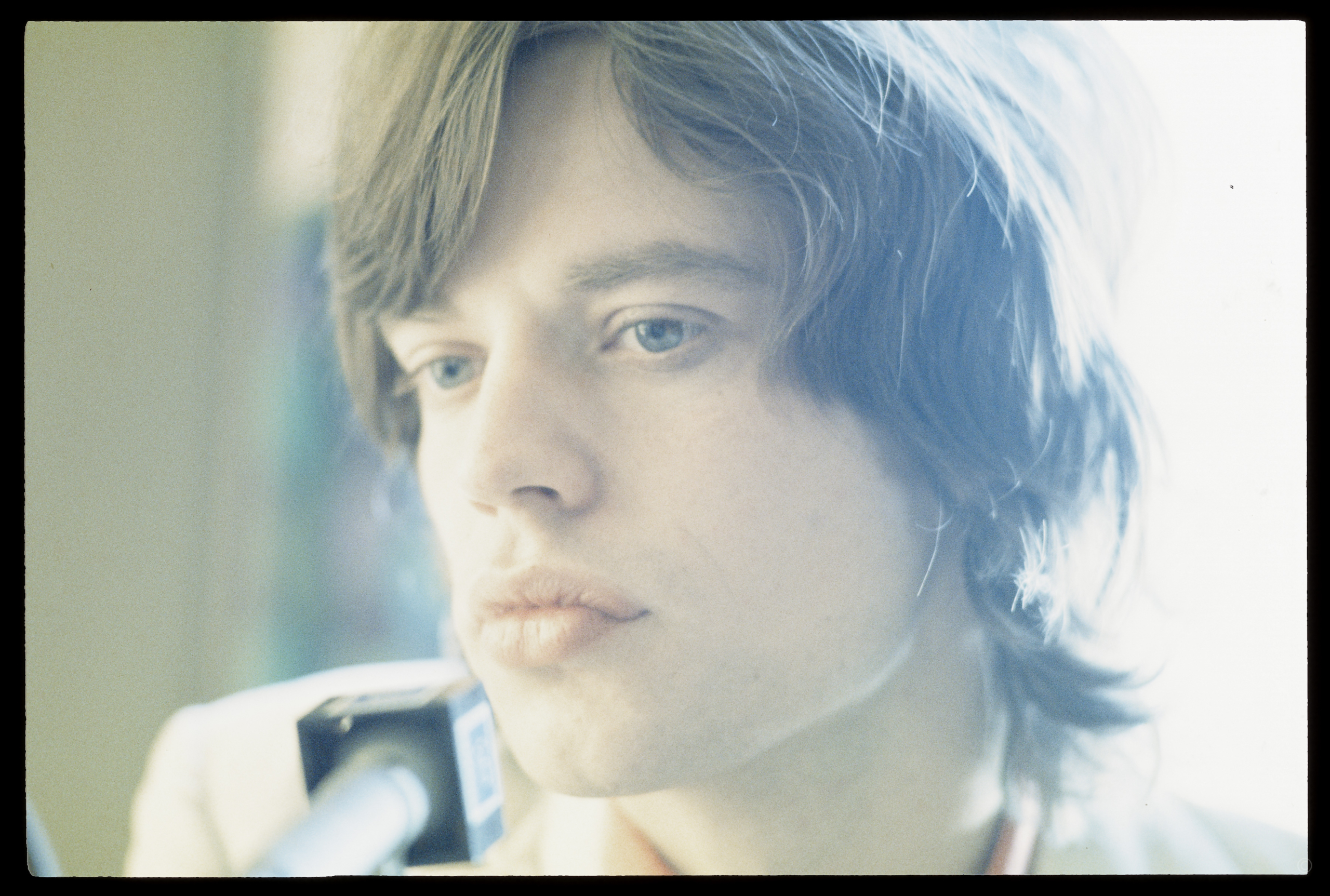
“It was chaos. That’s why I love this picture, for that very reason—that he’s able to be that pensive in that environment is the whole secret behind that picture for me, other than that he looks angelic. That’s the whole frame. Very little that’s in the book is cropped. You get the picture that’s the best, rather than trying to make a picture when you didn’t really get it, which is what cropping is about most of the time.”
———
Keith Richards Exits “The Starship,” 1972
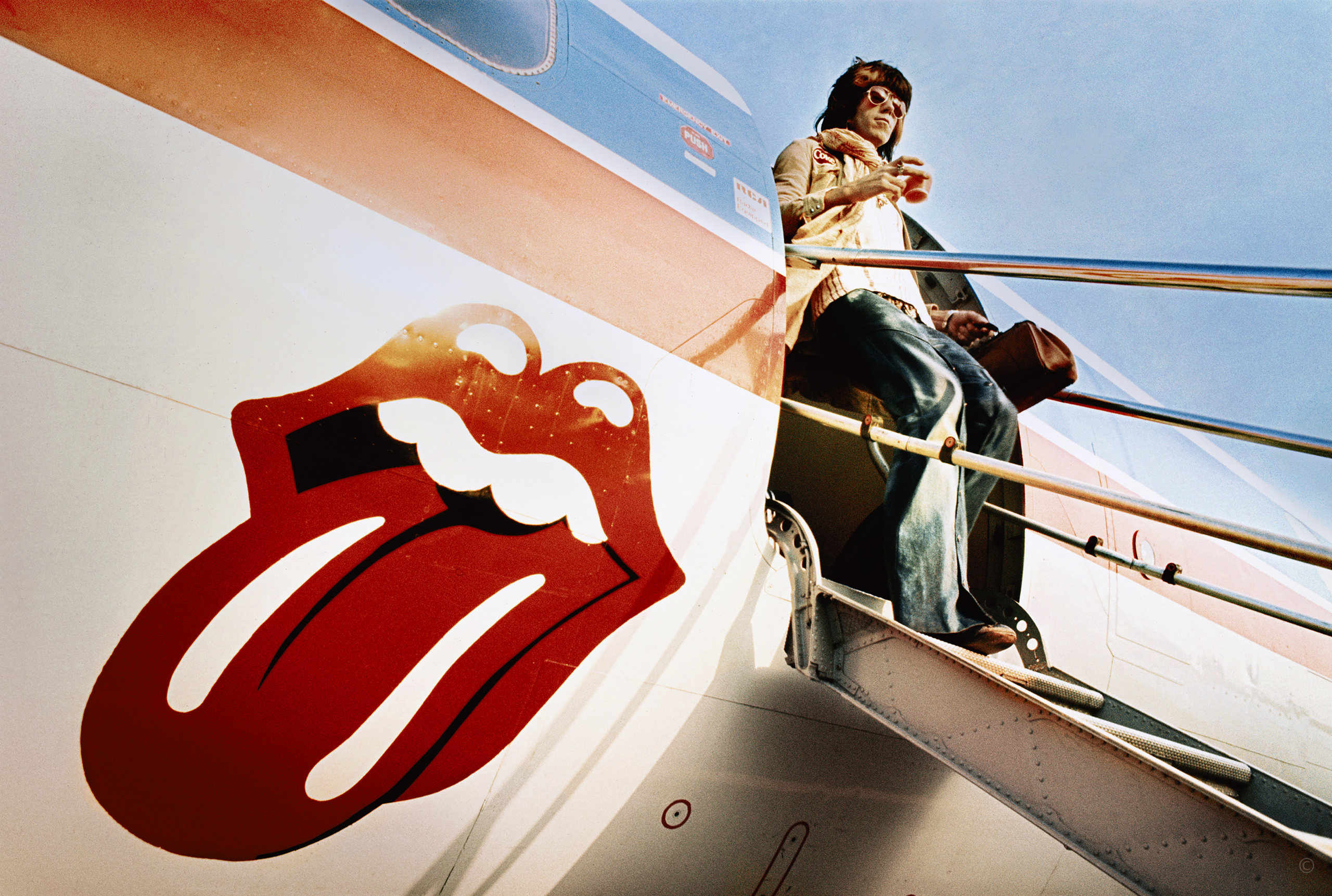
“In 1969, we flew on commercial airlines, occasionally on a rented plane, but they didn’t have their own plane. This was not a jet, it was a prop, but it was their own plane and that was a big deal. The logo turned out to be one of the most revolutionary acts of the Rolling Stones, if you think about it. It was so smart because at the time that it was put together, bands weren’t behaving that way. He’s exiting ‘The Starship,’ which is what he called it. I never heard it called that, and that is his actual drug bag. It’s full of his goodies. It’s no doubt something like a tequila sunrise or a Bloody Mary is in his right hand. That’s a really good encapsulation of that particular time, which was very druggy.”
———
Linda Ronstadt, Hasten Down the Wind, Malibu, 1976
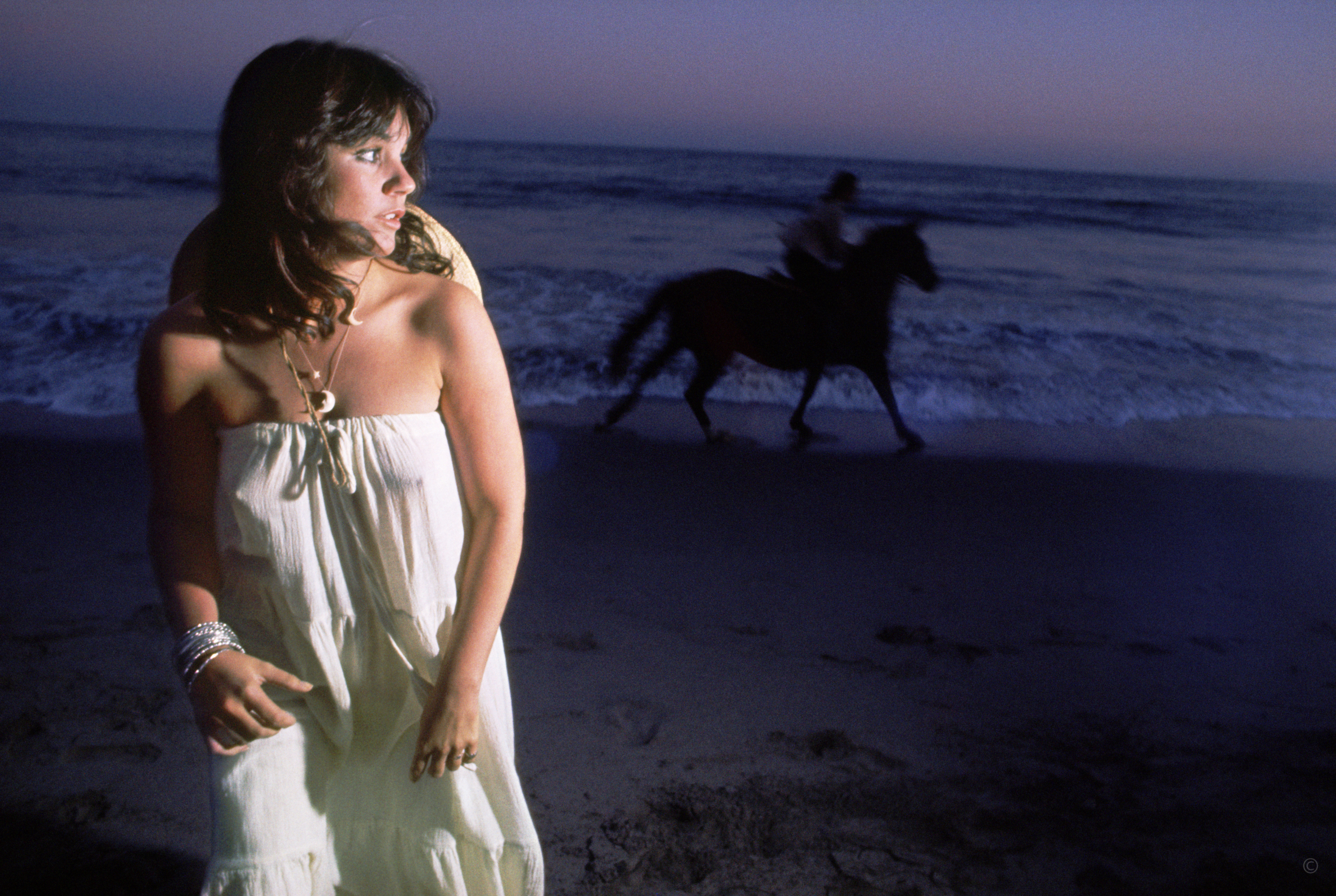
“I was actually hired to take an album cover, and we’d gone out to Malibu where she lived. There are no plans, there’s no ideas. We’re going to take some pictures. I had by that point developed this technique of mixing strobe, which is what’s lighting her with daylight. The horse was unplanned. I had no idea the horse was there. Linda had no idea the horse was there. In the picture right before this picture she’s looking at camera and yelling at me not to shoot because I’m going to scare the horse. That’s the other picture. This picture is just that instant. And if you got a great instance, it works.
All the pieces came together. When I think about it, it’s obviously an act of god on one level, in a sense that, who knew? And on the other level, it’s having enough chops and being prepared and being quick, and that’s what makes that picture.”

